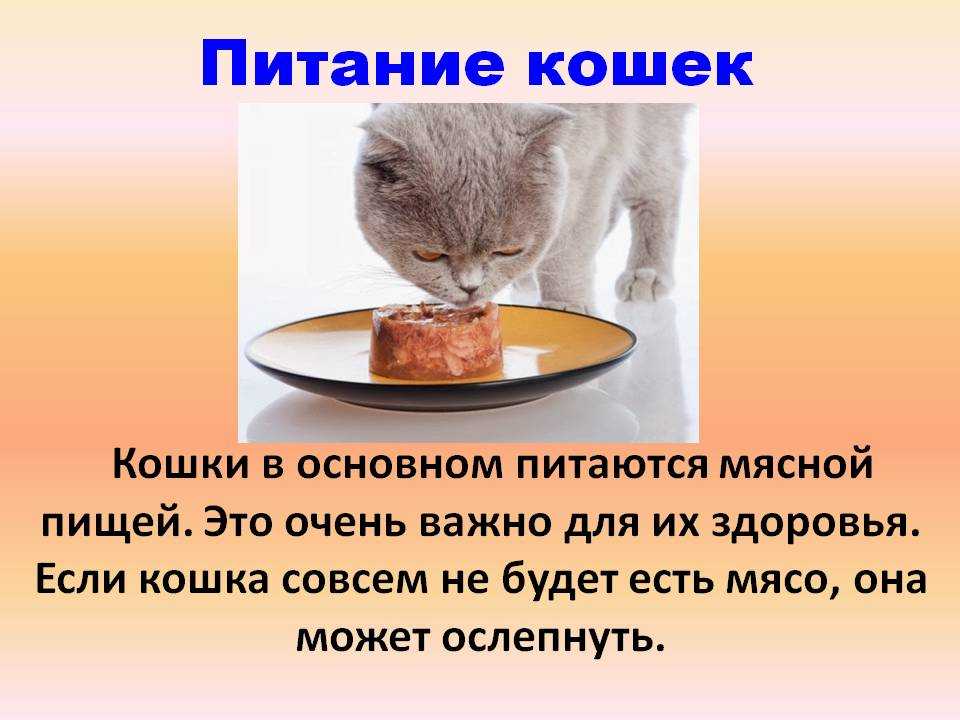Food for babies after 5 months india
6 Months Baby Food Chart with Indian Baby Food Recipes
last updated: by Kalyani
6 Months Baby Food Chart, Indian Baby Food recipes, By six months your baby will be completely ready for solids and showing signs for readiness. This post will help you to decide on what are the foods you can introduce at six months with sample food charts. Prefer homemade foods than buying packaged or ready-made foods available in the market, because homemade is safest and healthiest.
Also, remember that solids food can't replace the nutrients breastmilk or formula provides during the first year. So consider including solids in your baby's diet as a complementary feeding. Please read on how to introduce solids to the baby before you plan a food chart for your six months baby.
What foods can be included in 6 months of baby's diet?This stage is a little tricky as six months is a starting of solids. Safe, less allergic, easily digestible, healthy and nutritious foods are recommended when you start solids for the first time. Here is the list of safe options you can include in 6 months old baby's diet.
- Fruits: Apple, Avocado, Banana, Pears, muskmelon, Peaches, Plums, Prune
- Vegetables: Carrot, Pumpkin, Sweet Potato
- Cereals & Grains: Rice, Ragi, Barley, Semolina/Suji/Rava, sabudhana/Sago/Tapioca, Ragira/Amaranth/Phool Makhana, Quinoa
- Pulses: Yellow Moong Dal
- Dairy: Ghee, Butter (in moderation)
- Non-Vegetarian: None
For the quantity of food, always be guided with your baby's hunger as appetite varies from baby to baby, and most babies change from day-to-day. Here is an approximate amount:
- 1 tbsp of fruit or veg puree. Gradually increased to 4 tbsp
- 2 tbsp of cereal.
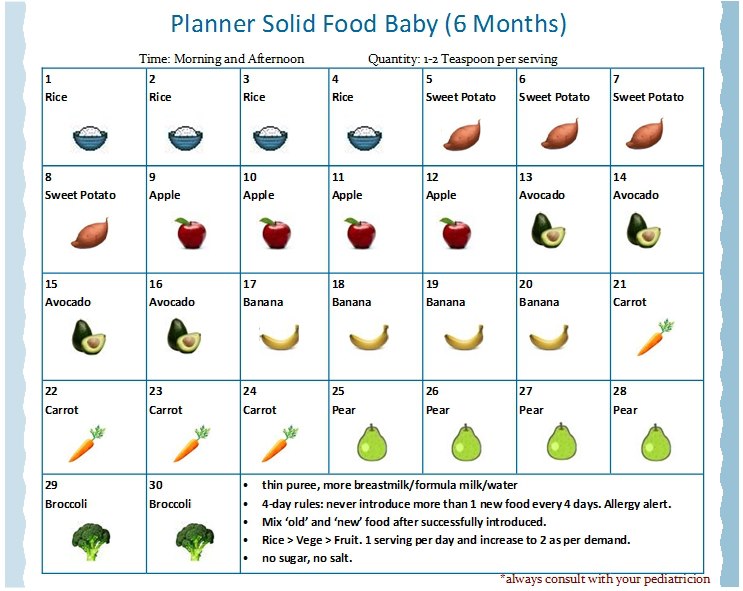 Gradually increased to 1/4 cup
Gradually increased to 1/4 cup
Here is the collection of 6 Months Baby Food Recipes, please customize the below sample charts with the mentioned recipes that can be included in 6 months baby’s diet based on availability, convenience, and your baby’s preference.
Sample Indian Food chart or Diet plan for 6 months old baby:One meal a day would do for a 6 months old baby. Gradually you can shift to two meals around 7 months. When you begin, start with small portions. Baby's first food should be semi-liquid, gradually move to thick consistency as your baby learned to eat.
Introduce one food at a time and follow 3 days rule which will help to find out allergic reactions to a particular food. Here are the sample food charts(weekly) for 6 months old baby. You can customize these charts with recipes for 6 months of baby food based on availability, convenience, and your baby's preference.
| Days | Early Morning | Breakfast | Mid-Morning | Lunch | Evening | Dinner | Bed time | |
| Week 1 | Day 1 | BM/FM | BM/FM | BM/FM | Banana Puree | BM/FM | BM/FM | BM/FM |
| Day 2 | BM/FM | BM/FM | BM/FM | Banana Puree | BM/FM | BM/FM | BM/FM | |
| Day 3 | BM/FM | BM/FM | BM/FM | Banana Puree | BM/FM | BM/FM | BM/FM | |
| Day 4 | BM/FM | BM/FM | BM/FM | Apple Puree | BM/FM | BM/FM | BM/FM | |
| Day 5 | BM/FM | BM/FM | BM/FM | Apple Puree | BM/FM | BM/FM | BM/FM | |
| Day 6 | BM/FM | BM/FM | BM/FM | Apple Puree | BM/FM | BM/FM | BM/FM | |
| Day 7 | BM/FM | BM/FM | BM/FM | Carrot Puree | BM/FM | BM/FM | BM/FM |
* BM/FM-Breast milk/Formula Milk
Week 2:| Days | Early Morning | Breakfast | Mid-Morning | Lunch | Evening | Dinner | Bed time | |
| Week 2 | Day 1 | BM/FM | BM/FM | BM/FM | Carrot Puree | BM/FM | BM/FM | BM/FM |
| Day 2 | BM/FM | BM/FM | BM/FM | Carrot Puree | BM/FM | BM/FM | BM/FM | |
| Day 3 | BM/FM | BM/FM | BM/FM | Pumpkin Puree | BM/FM | BM/FM | BM/FM | |
| Day 4 | BM/FM | BM/FM | BM/FM | Pumpkin Puree | BM/FM | BM/FM | BM/FM | |
| Day 5 | BM/FM | BM/FM | BM/FM | Pumpkin Puree | BM/FM | BM/FM | BM/FM | |
| Day 6 | BM/FM | BM/FM | BM/FM | Rice Gruel | BM/FM | BM/FM | BM/FM | |
| Day 7 | BM/FM | BM/FM | BM/FM | Rice Gruel | BM/FM | BM/FM | BM/FM |
* BM/FM-Breast milk/Formula Milk
Week 3:| Days | Early Morning | Breakfast | Mid-Morning | Lunch | Evening | Dinner | Bed time | |
| Week 3 | Day 1 | BM/FM | BM/FM | BM/FM | Rice Gruel | BM/FM | BM/FM | BM/FM |
| Day 2 | BM/FM | BM/FM | BM/FM | Rice Porridge | BM/FM | BM/FM | BM/FM | |
| Day 3 | BM/FM | BM/FM | BM/FM | Rice Porridge | BM/FM | BM/FM | BM/FM | |
| Day 4 | BM/FM | BM/FM | BM/FM | Rice Porridge | BM/FM | BM/FM | BM/FM | |
| Day 5 | BM/FM | BM/FM | BM/FM | Dal Ka Pani | BM/FM | BM/FM | BM/FM | |
| Day 6 | BM/FM | BM/FM | BM/FM | Dal Ka Pani | BM/FM | BM/FM | BM/FM | |
| Day 7 | BM/FM | BM/FM | BM/FM | Dal Ka Pani | BM/FM | BM/FM | BM/FM |
* BM/FM-Breastmilk/Formula Milk
Week 4:* BM/FM-Breast milk/Formula Milk
Last Updated: April-2018
Notes :- Sterilize the bowls and spoons used for feeding your baby in a vessel with hot water for five minutes and keep it immersed in the same vessel until use.

- Never introduce more than one food at a time when introducing solids to your baby.
- Salt and sugar are not recommended in baby's food until 1 year of age.
- Check for allergy symptoms when you are introducing a new food to your baby and stop feeding you if you find any symptoms.
- Feed your baby with breastmilk or formula milk on demand other than the timings mentioned in the chart.
- Always check with your pediatrician before introducing any new food.
- Steaming is a healthy option for baby food than pressure cooking. So I prefer steaming using an Idli pot or steamer.
Also, Check out the below links for 7 - 11 months Homemade Baby food recipes
- 7 months Baby food recipes
- 8 months Baby food recipes
- 9 months Baby food recipes
- 10 months Baby food recipes
- 11 months Baby food recipes
Indian Food Chart for Your 5-month-old Baby
Is your little one 5-months-old? Are you planning to start solids for your baby? You need to follow a food plan for your 5-months-old baby, with certain precautions and tips.
Most parents are not sure about when to start giving solids to their little one. As your baby reaches the 5-month age mark, you may remain concerned about feeding solids to her. Most of the experienced parents will advise you to wait for another month to start a solid diet for your child, while some will suggest you start solids beginning from the 5th month. The pediatrics society suggests keeping babies exclusively on breastmilk till the age of 6 months. However, there is no watertight rule that you need to follow. Some pediatricians advise you to start introducing your child to solids from 5 months.
If your child is happy with the milk and not giving any cues for starting solids, then it is recommended to keep him on breast milk until 6 months of age. Before introducing solids to your baby, you must consult your pediatrician. In some situations, your pediatrician may feel that introducing 5-month baby food is necessary for your child’s healthy development. Your baby will also give you cues that he is ready for some delicious 5-month baby food.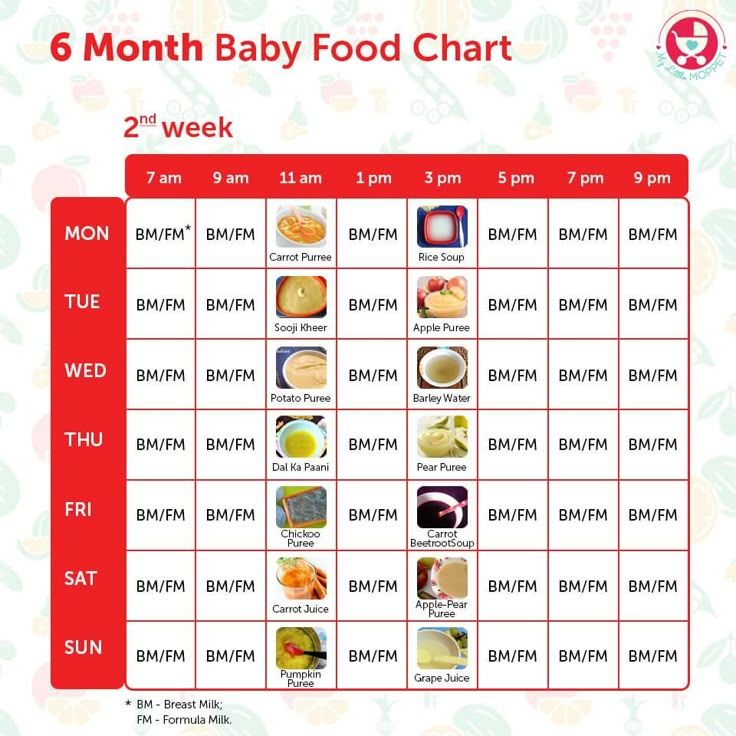
1. Your baby seems unsatisfied after milk feeds and asks for more to cure his hunger.
2. Your baby has good head control and can sit with less or no support.
3. Your baby has lost the tongue thrust reflex and opens mouth easily for a spoon.
4. Your baby looks on your plate out of curiosity and indicates to you that he too wants to eat the same.
If your baby shows these traits, he is surely ready for the introduction of nutritious solid food in his diet. Do make sure though that you never compromise on breast milk or formula milk in order to serve solids to your baby. Breast milk should remain the main ingredient of your child’s diet until the age of 6 months. You can serve packaged 5-month baby food, but it is better to start with homemade and natural food.
There isn’t a fixed set or meal plan that you can consider apt. for your child, rather, you have to try and test from the list of meals you can offer to your 5-month old baby at this point.
You must be wondering what should be served as the first food for your baby at 5 months of age. Here is a list of food items that can be included in a 5-months baby's food chart. These food items are known as stage 1 food for babies.
• Breast milk or formula milk
• Mashed banana, mashed avocado, pear sauce, and apple puree
• Well cooked, pureed and strained carrot, peas, sweet potato or pumpkin
• Pulse soup or daal ka paani, after boiling pulse in adequate water (preferably moong daal water)
• Rice water after boiling rice in sufficient water
• Sago water
• Single grain cerelac, preferably start with rice or oatmeal as they are least allergenic food items for babies.
Check out: Tasty homemade recipes for your baby, including homemade cerelac
Few homemade recipes for 5-months-old baby foodSingle grain cerelac• Dry roast clean rice and blend it into a blender to make a fine powder.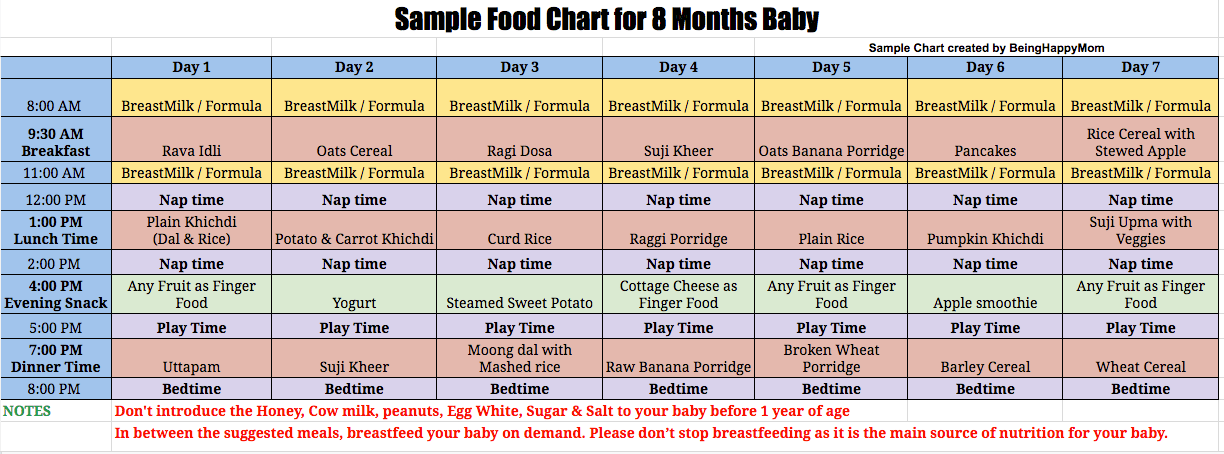
• Bring formula milk or breastmilk to boil and add a spoon of rice powder in it. Stir constantly.
• Simmer for 5 minutes and cook properly. Make sure it should have a liquid or paste consistency. Serve little warm.
You can replace the rice with oatmeal. Do not add any sugar to the cerelac.
Apple or Pear sauce• Peel, deseed and cut the apple or pear.
• Boil it until tender. Add water for boiling them.
• Once boiled, mash the apples or pear to achieve a smooth consistency. Sieve, if required. Serve the 5-month baby food to your little one.
Banana or Avocado Mash• Peel the ripe banana or avocado, take out the flesh - do not cook.
• Mash the desired fruit with a fork or blend it in the grinder.
• Serve the puree or you can add milk to it before serving.
Bananas are the best ingredient of 5-month baby foods. You can avoid the single grain cerelac for one more month and start with potassium-enriched bananas.
• Boil and mash the peas.
• Make sure you mash them properly leaving behind only puree and no chunks.
These homemade 5-month baby foods are good to start with.
IMPORTANT: Common food allergies in babies and how to cure them
Feeding tips for your 5-month-old baby• Watch out for any type of allergy with the specific food item. Consult your pediatrician if you see any allergy. Test with small quantities.
• Don’t fret if your baby doesn’t finish the meal. Let him develop his taste first.
• Do not compromise on breastmilk or formula milk. Breast milk is considered as the main source of nutrition for your baby in 5-month baby food chart.
• Use your finger or baby cutlery to feed him.
Remember, do not start giving solids to your baby without your doctor’s consultation. This 5-month baby food chart is just a reference, follow your instinct and your doctor’s advice before starting 5-month baby food.
For more healthy recipes and insights into your child's development, join the Parentlane Community today!
Disclaimer : Content presented here is for information purposes only, please consult with your doctor for any health queries
396
85
Shares
Everyday food in India — Real time
Society
07:00, 05/04/2019
Rice with rice, red chili and banana leaf feast
There is a concept in the West that in India, an impoverished and overpopulated country, overcooked and scalding food is eaten. But that's not the case at all. Indian culture won me over with its cuisine. Such a variety of tastes, colors, smells cannot be found, in my opinion, in any other cuisine in the world. And this despite the fact that traditional Indian cuisine is vegetarian, that is, it does not use meat, eggs and fish. Due to spices, various vegetables, grains, milk and oils, thousands of dishes proven over the centuries are created. For several years now, I have been trying to master the main dishes of this cuisine, learning from local women. In a new article for Realnoe Vremya, I will talk about what my menu has become after a long stay in India. nine0003
For several years now, I have been trying to master the main dishes of this cuisine, learning from local women. In a new article for Realnoe Vremya, I will talk about what my menu has become after a long stay in India. nine0003
All Five Tastes
The first thing you remember about Indian cuisine, especially if you get to know it not in restaurants designed for Western tourists, but in street cafes or visiting Indians, is the sharpness of the dishes. Indians love very spicy food, like the rest of the inhabitants of the hot zone. For many reasons. Hot peppers, chili, put in food, because it increases sweating and helps to endure heat more easily. In addition, pepper copes well with the destruction of infections in the body. nine0003
After some time I learned to eat moderately spicy food, and after that Russian cuisine seems boring and insipid to me. True, there are as many peppers as the Indians, but I'm still not used to it. They throw a handful of dried red peppers into any salty and sometimes sweet dish, and then bite it with green chili as well. Chili is not a traditional product for India, it was brought from other hot countries, but initially Indian cuisine also has a spicy taste due to ginger and black pepper.
Chili is not a traditional product for India, it was brought from other hot countries, but initially Indian cuisine also has a spicy taste due to ginger and black pepper.
However, it's not just about the spicy taste. The basics of Indian cooking are based on such a science of human health as Ayurveda, which says that all tastes should be present in food during lunch: bitter, sour, spicy, sweet, and astringent.
A pile of rice is placed on a large round tray, and small cups with all kinds of snacks, side dishes, seasonings and sauces are placed around it. From Hindi, it translates as "large plate" or "tray". A hill of rice is placed on a large round tray, and small cups with all kinds of snacks, side dishes, seasonings and sauces are placed around it. This way you can try a little bit of everything and combine different dishes that just combine all five tastes. This is quite a hearty meal, in India there is even a saying: "Men eat thali to be strong, and women to be fat and beautiful. " In some cafes (and in the homes of residents of some states), thali is served in the traditional way, not on a tray, but on banana leaves: this method is good for health, banana leaves release useful substances when in contact with food. nine0003
" In some cafes (and in the homes of residents of some states), thali is served in the traditional way, not on a tray, but on banana leaves: this method is good for health, banana leaves release useful substances when in contact with food. nine0003 The same thali is prepared at home, and on holidays the number of dishes can reach 20-25. Also, a slice of lemon, a slice of ginger and a little salt are placed on the tray, they must be eaten first to awaken the appetite and start digestion.
Moreover, in most Indian cafes you can get a supplement for free: after a while you will be offered more rice and various vegetable dishes. There is no need to pay extra, you can eat as much as you want, your serving is not limited in weight and volume. nine0003
Rice with rice
Rice is the main food in the Indian diet. Rice is eaten all year round, morning, afternoon and evening. It is easy to grow, cheap, and therefore accessible to all segments of the population. Mostly Indians eat white polished rice. Brown rice, which has recently become so fashionable in the West, is eaten only by very poor people. Many recipes for rice dishes have been preserved in modern India since ancient times, they are mentioned in the scriptures (shastras). There are many options for boiling rice, frying it with vegetables and spices (pulao, biryani), making rice sweets. nine0003
Mostly Indians eat white polished rice. Brown rice, which has recently become so fashionable in the West, is eaten only by very poor people. Many recipes for rice dishes have been preserved in modern India since ancient times, they are mentioned in the scriptures (shastras). There are many options for boiling rice, frying it with vegetables and spices (pulao, biryani), making rice sweets. nine0003
An Indian can eat a mountain of rice for lunch. And this is not a figurative expression. All other dishes are only an addition, be it a little soup, sauce or vegetables. Especially love rice in South India. Diversity at lunch is achieved by serving several types of differently cooked rice. First, as a rule, there is a handful of turmeric yellow rice with vegetables, then flattened rice may be served, and then the main portion of white.
Rice is eaten all year round, morning, afternoon and evening. It is easy to grow, cheap, and therefore accessible to all segments of the populationBean dishes - dal
Indians usually eat without cutlery, with the right hand. The left is considered unclean. Eating with your hands is healthy and delicious. It is useful because it is difficult to take too much with your hand, fingers are sensitive to the consistency of food and its temperature, unlike a spoon. Rice itself is dry, and in order to soak it, medium-thick pea soup is poured directly into a hill of rice, dal. In India, many varieties of peas are available in all shops and stores. These are chana-dal, and chickpeas, and urad-dal, and matar-dal (large peas), and mung-dal (mash). From very small peas, which quickly boil and form a thick creamy soup, to large peas, which are known in Russia. nine0003
The left is considered unclean. Eating with your hands is healthy and delicious. It is useful because it is difficult to take too much with your hand, fingers are sensitive to the consistency of food and its temperature, unlike a spoon. Rice itself is dry, and in order to soak it, medium-thick pea soup is poured directly into a hill of rice, dal. In India, many varieties of peas are available in all shops and stores. These are chana-dal, and chickpeas, and urad-dal, and matar-dal (large peas), and mung-dal (mash). From very small peas, which quickly boil and form a thick creamy soup, to large peas, which are known in Russia. nine0003
Bean dishes are superior in protein to all other foods. There are so many recipes for their preparation that you can cook different types of dala for several months and not repeat. The simplest recipe is matar-dal: peas are boiled and blended in a saucepan until smooth, and then spices fried in oil, masala, are added to it, which stimulates digestion and gives the dish aroma and color. Masala usually includes fresh ginger paste and turmeric.
Masala usually includes fresh ginger paste and turmeric.
Almost all Indian housewives have pressure cookers at home: they can quickly boil dal, saving gas, which is not cheap in the country. nine0003
Vegetable dishes - sabji
In India, where over 80 percent of the population is vegetarian, rice and dal are the basis of a nutritious meal. The poor who cannot buy vegetables every day eat only rice and dal. In difficult times, when dal grows in price, they eat only rice, eating it with green chili. But traditionally, rice and dal are also served with sabji, fried and stewed vegetables with spices. India is a paradise for vegetarians, growing and selling a wide variety of fruits and vegetables. The markets where vegetables are sold are called “sabji bazaars”, where fresh vegetables and fruits freshly harvested in the fields and beds are unloaded every morning at sunrise. nine0003
Many of them are known to us: pumpkin, eggplant, potatoes, radishes, cauliflower, tomatoes.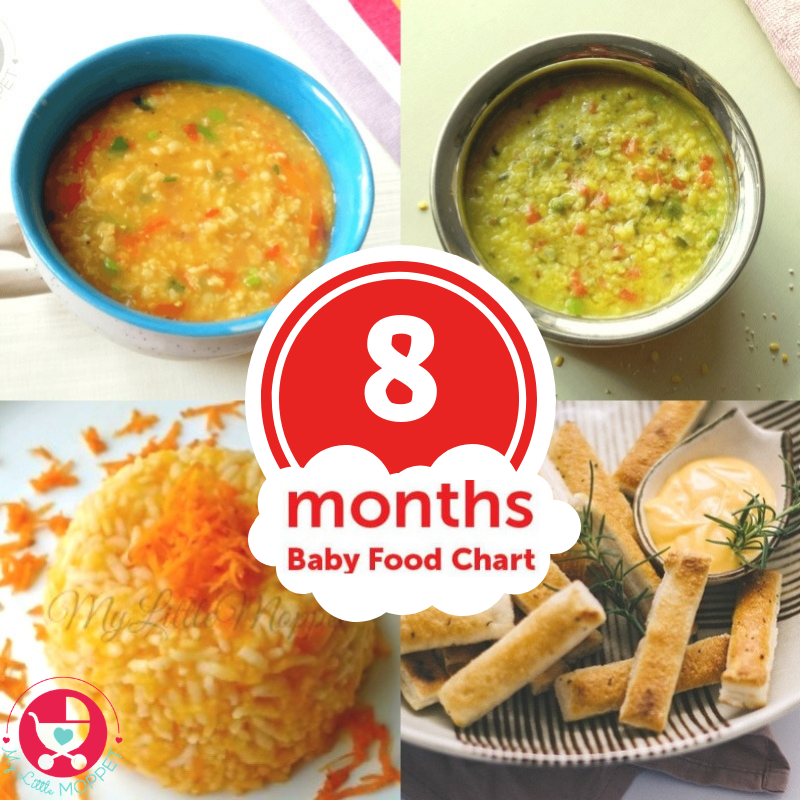 Others are little known in the West: breadfruit, potol (Indian cucumber), bitter melon (karela), green papaya, and so on. In India, Shaka dishes are very popular, this herb is very cheap and available all year round. It is simply fried in a pan, seasoned with salt, spices and oil.
Others are little known in the West: breadfruit, potol (Indian cucumber), bitter melon (karela), green papaya, and so on. In India, Shaka dishes are very popular, this herb is very cheap and available all year round. It is simply fried in a pan, seasoned with salt, spices and oil.
Vegetables are fried mainly in mustard oil, which, by the way, has a very high combustion temperature. They also cook with coconut, peanut and sesame oils. But ghee, ghee, has been considered a sign of prosperity in India for many centuries. It is also called liquid gold, because earlier a person's wealth was judged by ghee reserves. Ghee is also healthier than other oils and is called “brain food” in the shastras. When you cook food with ghee, the dish has a special caramel aroma and sweet taste. nine0003
Ginger paste, chili, cumin, coriander and mustard are usually added to vegetables. Several types of sabji are served on the holiday at once.
Several types of sabji are served on the holiday at once.
Indian bread
In traditional Indian cuisine there is no baking, the bread is fried. Usually the stove is built in the yard of clay bricks, the fuel is cakes made from cow dung. In the villages and towns that still make up most of India, women can be seen plastering fences and trees with these cakes so that they dry out. It is considered the most environmentally friendly fuel. nine0003
Although there are electric stoves in many Indian homes, sourdough or yeast bread is still not eaten by most Indians. But here, as in all Eastern cultures, there is a wide variety of cakes that are cooked on an open fire.
The most popular flatbread is chapati. Cooking it is not so easy, girls from childhood, under the supervision of their mother, learn to roll perfectly flat cakes from flour, water and salt. Then they are slightly warmed up in a hot flat frying pan without sides and thrown directly into the fire or on a metal grate above the fire. If everything is done correctly, then the cake should swell to the state of a ball and thus bake from the inside. Chapatis are smeared with ghee. nine0003 The most popular flatbread is chapati. Cooking it is not so easy, girls from childhood, under the supervision of their mother, learn to roll perfectly flat cakes from flour, water and salt
If everything is done correctly, then the cake should swell to the state of a ball and thus bake from the inside. Chapatis are smeared with ghee. nine0003 The most popular flatbread is chapati. Cooking it is not so easy, girls from childhood, under the supervision of their mother, learn to roll perfectly flat cakes from flour, water and salt
A more refined and expensive version of cakes is puri. They are thrown into hot oil, and there is a belief that if a woman's puris are swollen, then her mother-in-law loves her. Indians eat puri for breakfast along with some stewed vegetables or jam.
There are also stuffed flatbreads called parathi. Cheese, potatoes, greens are put there as a filling. My favorite type of flatbread is lachcha paratha, I first tried real lachcha paratha in a small town in South India. On the street early in the morning, an elderly old man was preparing these cakes in a shop, which, probably, was inherited from his father, and since then he has been toasting bread here every day. His daughter and grandson helped him. Lachchha paratha is a hot, crispy, puffy, buttered puff pastry. nine0003
His daughter and grandson helped him. Lachchha paratha is a hot, crispy, puffy, buttered puff pastry. nine0003
All flatbreads are served hot, straight off the fire. However, Indians generally rarely eat food that has lain down for some time, they do not like semi-finished products either. According to Ayurveda, it is harmful to heat food, especially rice, dhal and vegetables.
Of course, large families don't have cakes every day, because they take longer to prepare. They are served with rice, dal and sabji. A piece of cake comes off and with its help a little rice and vegetables are collected, this is very convenient when the rice is crumbly and the vegetables have not cooled down yet. nine0003 Rice, daloo and sabji are served with spicy-sweet sauce - chutney, with a lot of pepper and sugar
Snacks and sauces
Indian cuisine is rich in various snacks. Indians are very hospitable people, and even if they don't have lunch yet, you will certainly be treated to some deep-fried homemade crunchy chickpea flour crackers with spices and a glass of water or a chilled drink.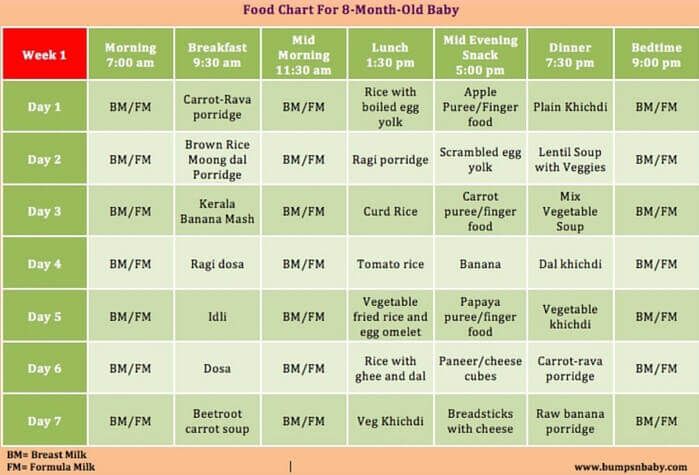 Such salty snacks are convenient to take with you on the road, they do not deteriorate. nine0003
Such salty snacks are convenient to take with you on the road, they do not deteriorate. nine0003
Another type of popular snack is pakora: deep-fried pieces of vegetables (and sometimes also fruit and paneer or Adyghe cheese). This is a simple and cheap dish. Indians simply adore him, so there are always pakora sellers on trains, on the streets, in parks at social events. At home and in cafes, pakoras are usually served with soup or a drink.
Rice, dal and sabji are also served with spicy-sweet sauce - chutney, with lots of pepper and sugar. Such sauces emphasize the taste of the main dish; you can’t eat a lot of them because of the spiciness. I note that many modern Indians are very fond of onions and garlic and put it with the same fanaticism as chili in all dishes. However, traditional cuisine does not use these seasonings. Moreover, according to the shastras, onions and garlic are considered unclean foods and are not recommended for human consumption. nine0003
Sweets
Factory-made sweets and packaged chocolates have not yet killed Indian love for handmade sweets.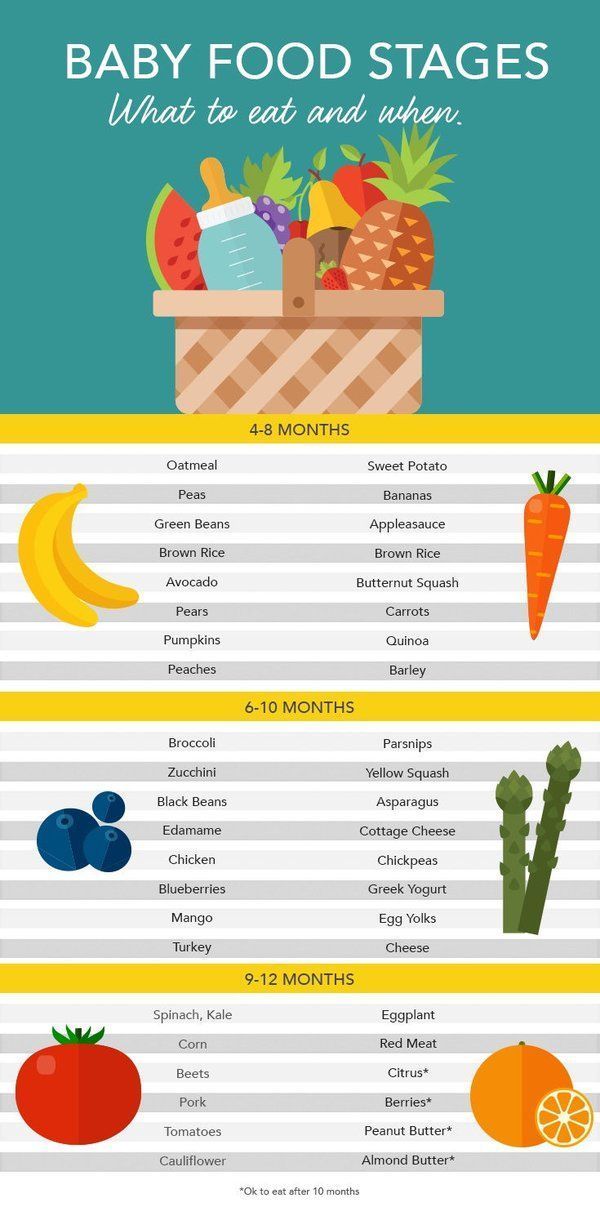 They are prepared by housewives, temple cooks, and shopkeepers (halvais), the recipes have practically not changed over the centuries. The chef's professionalism is expressed not in his innovation, but in his ability to achieve a taste that is as close to the traditional as possible. Many sweet dishes are made from boiled milk. Milk with sugar is boiled for an hour or longer, with constant stirring. This is a lot of work, but Indian women believe that for them it is an opportunity to put all their love for loved ones into cooking. Depending on the degree of milk cooking, burfi, khir, rabri, “sweet rice” are obtained. Decorate such sweets with nuts, ground cardamom, saffron. nine0003
They are prepared by housewives, temple cooks, and shopkeepers (halvais), the recipes have practically not changed over the centuries. The chef's professionalism is expressed not in his innovation, but in his ability to achieve a taste that is as close to the traditional as possible. Many sweet dishes are made from boiled milk. Milk with sugar is boiled for an hour or longer, with constant stirring. This is a lot of work, but Indian women believe that for them it is an opportunity to put all their love for loved ones into cooking. Depending on the degree of milk cooking, burfi, khir, rabri, “sweet rice” are obtained. Decorate such sweets with nuts, ground cardamom, saffron. nine0003
Curd milk mashed with powdered sugar produces the most delicate sandesh. If the sandeshs are boiled in sugar syrup, then these are already rasagulas. And if after that put in a creamy sauce, then rasamalai.
Factory-made sweets and packaged chocolates have not yet killed Indians' love for hand-made sweets.
One of the most popular dishes in India is halava. Not halva, namely halava, which is made mainly from semolina and sugar with butter and resembles pudding. nine0003
Homemade yogurt is fermented by housewives every day. Women take pride in using the leaven that has been passed down from generation to generation, from mother to daughter. Condensed yogurt can be used to make a delicate shrikhand dessert, and if you dilute the yogurt with water, add fruit puree and sugar, you get lassi, a refreshing and satisfying drink.
In India, you can find different types of sugar in all stores and stalls, it is not uncommon and it is very affordable. These are cane (jaggery), and date, and palm (gur) sugar. The word "sugar" itself comes from the Sanskrit word "sarkar". The amount of sugar Indians use to make sweets is incredible. It is clear that in this way sweets are stored longer in the heat. They also traditionally add dried fruits, spices and natural flavors - green cardamom, nutmeg, cloves, saffron, black pepper and camphor, rose water.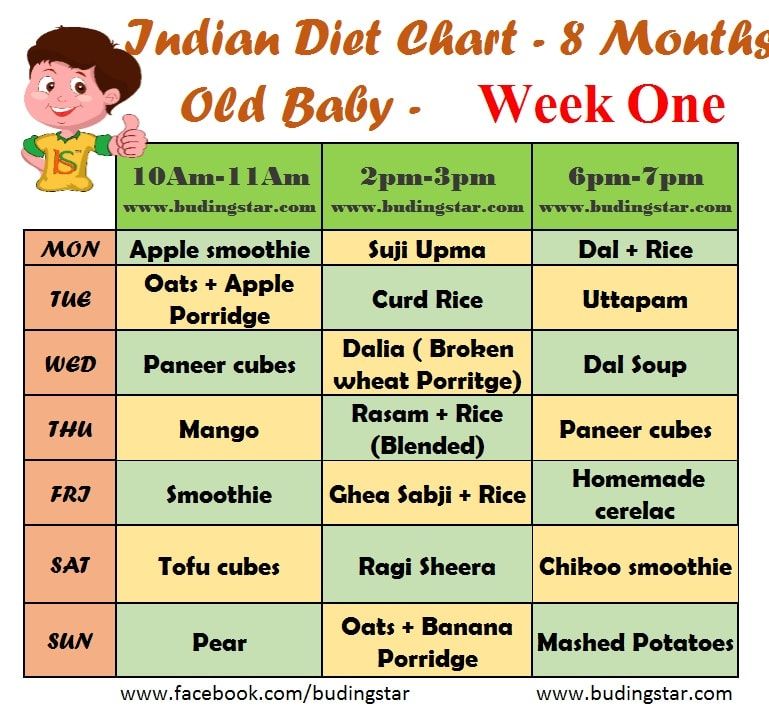 Sweets are usually sprinkled with nuts or coconut flakes. nine0003
Sweets are usually sprinkled with nuts or coconut flakes. nine0003
Drinks
Tea was brought to India by the British. Now this drink is very popular here, but they prepare it in their own way: they boil it together with milk, ginger, cardamom, cinnamon and other spices. This is called masala chai. It should be piping hot, drink it from tiny cups.
I saw how early in the morning, before dawn, some old man takes his smoky iron stove to the side of the road, kindles a fire in it and brews tea in a teapot. This is his earnings, perhaps, throughout his life. Everyone who passes by on their way to work, as well as rickshawals and cyclists, buy tea from him in small cups and drink it sitting next to him right on the ground. This is the morning ritual of many Indians. nine0003
However, tea and coffee, from the point of view of the sastras and according to the authoritative brahmins, are not pure foods. And many Indians refuse these drinks, which have a slight narcotic effect and are addictive.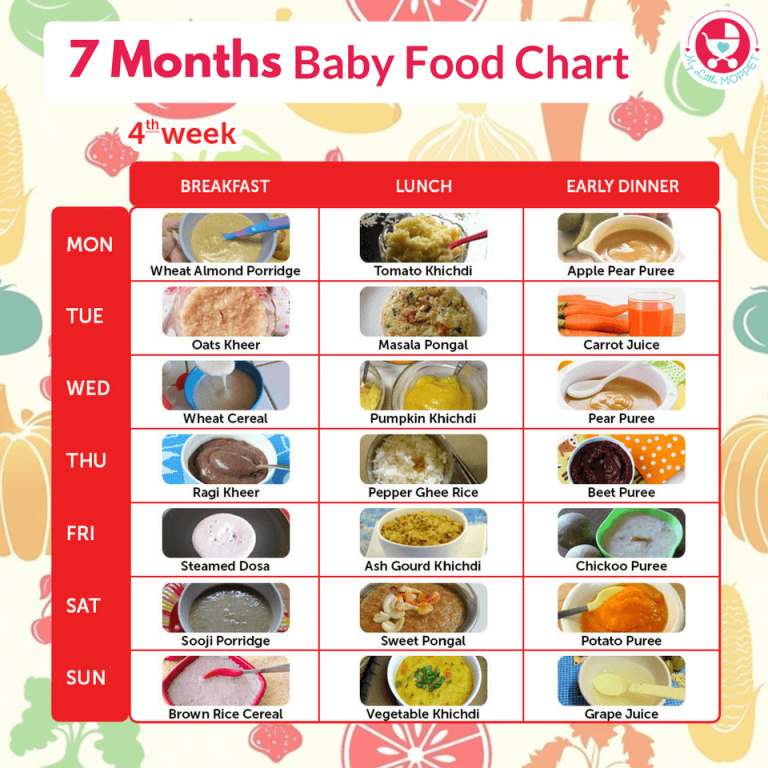 The same attitude in traditional culture to alcohol. In some places it is even forbidden to sell alcohol, for example, where I live (Mayapur, Bengal).
The same attitude in traditional culture to alcohol. In some places it is even forbidden to sell alcohol, for example, where I live (Mayapur, Bengal).
My culinary experiences
Before coming to India, I had some experience in cooking Russian and European cuisine. But when I got acquainted with Indian cuisine, I realized that I didn’t know how to cook at all. In India, cooking is a complex and delicate art, and it is better if a girl learns it from childhood. Now I take lessons from local women, YouTube videos are a good help, since many Indian housewives or their grandchildren are infected with the modern disease to blog culinary. Of course, not all recipes that you can see there are proven. Therefore, in case one of the readers is interested in how to learn how to cook Indian cuisine, I will advise a number of sources. Of the blogs that talk about Indian cuisine in Russian, this is Culinary Journey: Indian Cuisine. And from the authoritative literature - the book of Yamuna devi "Indian Vegetarian Cuisine" and Adiraja das "Vedic Culinary Art". In particular, Yamuna, a cook from America, traveled all over India, collecting traditional recipes from temple priests and householders. nine0003
Of course, not all recipes that you can see there are proven. Therefore, in case one of the readers is interested in how to learn how to cook Indian cuisine, I will advise a number of sources. Of the blogs that talk about Indian cuisine in Russian, this is Culinary Journey: Indian Cuisine. And from the authoritative literature - the book of Yamuna devi "Indian Vegetarian Cuisine" and Adiraja das "Vedic Culinary Art". In particular, Yamuna, a cook from America, traveled all over India, collecting traditional recipes from temple priests and householders. nine0003
In some articles I have already written that in the tradition of India it is customary to take consecrated food (“What did you eat today?” as the main Indian question). The well-known philosophical and religious Indian treatise Bhagavad Gita says that one who takes food that is not offered to God "tastes only sin." Food is offered both in temples and at home altars, reciting the appropriate mantras. In order to offer it, the chef does not taste the dish during the cooking process: Indian housewives can determine by eye whether there is enough salt and sugar in the dish. nine0003
nine0003
Most Indians know that eating food from the store or cooked anywhere and by anyone is a low standard of living, because with food we take over the consciousness of a person and take away his sins. Indians love to eat what their mother or wife cooks. And a woman's ability to cook is decisive when choosing a bride. Despite the fact that emancipation in large cities of India is gaining momentum and more and more women are choosing a career over family life, women housewives in India are still treated with respect today, because all family members thanks to them can get fresh and healthy food every day. nine0013
Natalia Fedorova, photo from the archive of the author
SocietyCultureGoa resorts with children
For those who come here with children for the first time, everything usually starts like this.
Ksenia Lobachevskaya blog freelivingAny mother brought up on the ideals of total hygiene and boiling would make her hair stand on end in India.
Even I, who, it would seem, had already seen different India, when I got here with a child, at first there was a culture shock - I probably lost the habit in a couple of years. After arriving at night, we settled in the same room as the first time upon arrival in Arambol 6 years ago. Small, dark, and now also very dirty (obviously, it has never been renovated). nine0003
But then life gradually gets better:
We washed everything and everything there, ourselves and the refrigerator — and finally exhaled. The slow cooker took its place of honor, the stock of food was bought and our first quiet family wintering in Goa flowed like a river. Day after day, month after month.
Whether to go to Goa with a small child is a rhetorical question. Forums explode from discussions. Someone thinks that experiments on the immunity of children are a dangerous business, and such trips are against. Others are sure that unsanitary conditions can be encountered in their native Anapa, and boldly pack their bags. nine0003
nine0003
But Goa has two weighty arguments that you can't argue with: warm sea and endless beaches. If you have made a choice in their favor, we will tell you in which villages it is better to settle with a baby, is it possible to find cottage cheese and kefir in Goa, is it worth taking a stroller with you and how to place an order in a cafe so that the food is not fiery spicy.
How to get to Goa
Where is it better to live with children
- North Goa
- South Goa
How to feed a child
- Where to buy milk, baby purees and other
- How to feed a child in a cafe
How to entertain children in Goa
What you need to know about medicine in Goa
What to watch out for6
How to get to Goa
There are three routes to fly to Goa.
Tatyana Solomatina blog otdoxnitetalks about the first option:
Photo by Tatyana SolomatinaDirect charter flights fly from Russia to Goa during the tourist season.
Such a flight from Moscow to Dabolim Airport takes about 7 hours. However, the trouble is that it is almost impossible to buy charter tickets during the season. Moreover, if tour operators throw them on the market, it is by no means at a “charter” price. However, this is the easiest way to get to Goa, so it is worth keeping an eye on such offers. nine0003
It is convenient to get from Dabolim Airport by transfer. Why?
- easy to book and pay online;
- you can order a child seat, booster and even a car seat in the salon;
- the driver will meet and escort you to the car. After a tiring 7-hour flight, you simply put the baby in the car and go to your vacation spot, rather than running around the airport looking for a taxi.
The next two ways to get to Goa are to fly to Mumbai or Delhi. If you take a ticket with a transfer in Istanbul or Zurich, you can save a lot. nine0003
From Delhi and Mumbai you can get to Goa by plane, train or bus.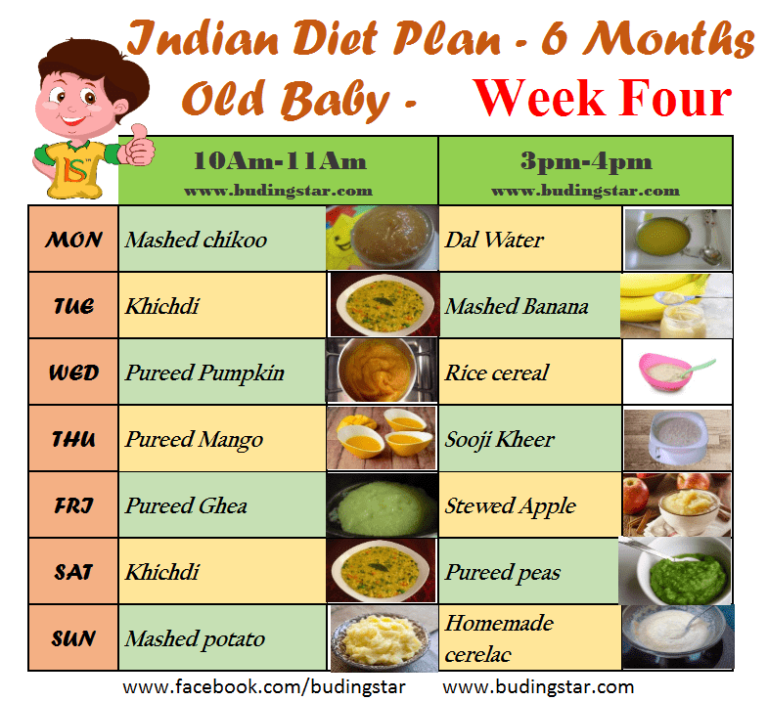 In the first case, it will be expensive, By bus - long, but cheap. When traveling by rail, it is important to match the schedule with the time of arrival, as trains do not run at night.
In the first case, it will be expensive, By bus - long, but cheap. When traveling by rail, it is important to match the schedule with the time of arrival, as trains do not run at night.
❗You can also get from Delhi to Goa by rented car. You can take it directly at the airport or even at home online. Most importantly, do not forget to indicate in the application that you need a child seat or booster.
Where is it better to live with children
Map of GoaGoa is divided into two parts, north and south. You will not find large cities on the seashore, but there are many small villages.
Experienced traveling mothers talk about the difference between northern and southern Goa.
Svetlana, guest at economlegko:
I have been to GOA five times, for a period of two weeks to a month. And always with children, starting from the age of three. For holidays with children, you need to go only to the south. There are no anxious men, no such dirt as in the north.
And, of course, there is no entertainment either. Get ready to entertain the kids yourself. And the rest - GOA - it's a great vacation. nine0003
Maryalice13, user otzyv:
If you are a fan of absolute seal rest and complete relaxation, if you do not get tired of eating in the same restaurant, if you are a champion of 100% cleanliness and order, then you should definitely choose one of the hotels in the south of Goa. We rented a motorbike and rode up north for fun. I can’t say that the distances there are gigantic, but you still can’t run into a child, so this time I knew for sure that we would go to the north of Goa. nine0003
Site author indianochka:
If you need peace and beautiful nature, then welcome to South Goa. But you will most likely not see any fun holidays and unusual people here. North Goa is saturated with the color of a mixture of cultures, noisy youth, the atmosphere of an eternal holiday, but the beaches and hotels here are objectively worse.

❗ The stroller is only needed to move around the airport. It will be difficult with her in Goa, because there are no sidewalks and good roads. nine0003
North Goa
Arambol
In Arambol you can stay in a guest house, rent an apartment or find a bamboo bungalow right on the seashore. True, in the latter case, you will have to live without hot water and a kitchen.
These are the same bamboo bungalowsThere are many cafes and restaurants in the village.
Alexander and Natalia blog "Life with a dream"tell where in Arambol you can feed the whole family with borscht or dumplings:
For those who really miss Russian cuisine, Pirozhki cafe. It is located 3 minutes drive from Arambol towards Mandrem on the right side. Stylized as a simple garage, to the melodies of Soviet songs, you will be fed with borscht, dumplings, dumplings, pies and compote. Everything is exactly like in Soviet times. nine0003
You won't be able to relax on the main beach in Arambol. And here's why:
And here's why:
If you walk towards the Mandrem beach, you will find quiet and suitable places for swimming.
Mandrem
The quietest area in the north of Goa. At this resort, you will not suffer from noisy night parties under the windows. The beach here is one and a half kilometers long. The entrance to the sea is gentle, there are no big waves. There are vegetable shops and grocery stores.
One of the minuses of the village is its remoteness from the sea. On a bike, you can drive to the nearest beach in 5 minutes or walk for 30–40. In addition, bloggers note that the houses here are very dark and the light has to be turned on even during the day. nine0003 Site photo goavilla
Mandrem is popular with tourists, it is better to book accommodation here in advance.
Morjim
If you are afraid of the language barrier, go to this village. Many tourists from Russia rest here, and in the cafe you can easily order lunches from the Russian-language menu.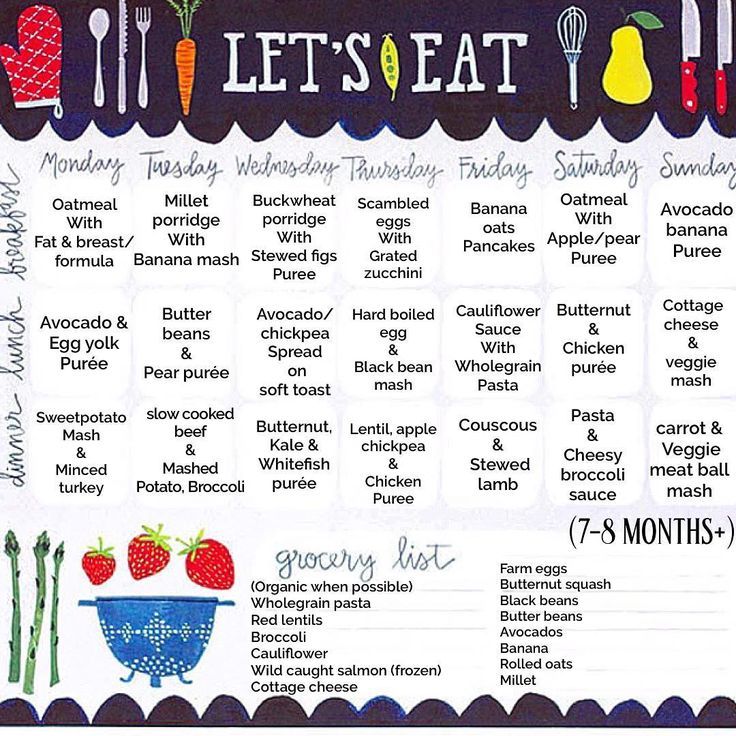 True, prices here are higher than in other villages of North Goa. But there are also fewer tourists. In addition, if you rent accommodation in advance, you can save a decent amount.
True, prices here are higher than in other villages of North Goa. But there are also fewer tourists. In addition, if you rent accommodation in advance, you can save a decent amount.
An additional argument in favor of Morjim is a three-kilometer beach with fine sand and a gentle entry into the water. nine0003
Maryalice13 with otzyv vacationed in Morjim with a 3-year-old child and shares advice on where to swim:
If you are facing the sea, then on the left the beach strip is narrower, where rolling waves flood the first row of sunbeds, not entirely, of course, but somehow it's not very cool.
On the right, on the contrary, you have to cut 20-30 meters to the sea. We spent time here. The child calmly dug in the dry sand, not fearing that his toys would be carried away by the oncoming wave. And if the daughter wanted to run along the beach, we had no fear that she would somehow accidentally end up in the sea without us.
nine0003
❗There is even a kindergarten here. Babies from one and a half years old can be left for several hours or a whole day.
Kerim
Polina spent the winter in Goa with her husband and a one-year-old child. On the detkitur website, he tells what is good about Kerim and what are his disadvantages:
North Goa's most recent beach, surrounded by pine trees that provide amazing shade. It is very sparsely populated and more one feels unity with nature. And here is the only equipped embankment: you can walk along the sea along the asphalt alley in the shade of tall trees, sit in the little squares by the sea on the benches. But Kerim has a very steep entry into the sea and a narrow sandy strip. Our child almost did not swim, mostly played near the sun loungers in the shade of the canopy. At the very beginning of the beach there are several cafes, all of them without a shower. nine0003
You can rent accommodation in Kerim on the spot, but with a child it is better to rent it in advance.
❗Where in North Goa you don’t need to go , says the same Maryalice13 with otzyv:
For holidays with children, I do not recommend choosing the following beaches - Candolim, Calangute, Baga, Anjuna and Vagator. I don’t recommend it for the following reasons: on some of them, rather sharp stones complicate entry into the water, and algae come across (my child categorically refused to enter the water when he saw algae, “dirty water” and that’s it), these beaches are popular with the Indians themselves that does not add to their purity. nine0003
South Goa
Majorda
This area includes 11 villages.
Pavel Laputskov on travelask advises where to find the best beach:
Photo by travelaskGeographically, the settlement of Majorda includes three beaches - Utorda, Majorda and Colva. The last beach is considered the most popular among locals and Indian tourists, so it is always noisy, crowded, and sometimes dirty.
For relaxation, it is best to choose Majorda Beach or Utorda. These two beaches have amazing sand, there are several seks where you can have a delicious meal, and it is also not very crowded. nine0003
There are many accommodation options in Majorda, it is better to book a hotel or apartment online even before the trip.
Benaulim
Iskra website MAKE-TRIPtells what will attract this village:
Photo courtesy of new-travelerBenaulim has a relaxed atmosphere. The main contingent of vacationers are Russian tourists and Europeans of retirement age. There are no noisy clubs, but there are small cafes. Life here starts early and ends early too - by 19:00 everything is already closed. The nearest shops and other benefits of civilization are in the neighboring villages of Margao and Colva. nine0003
As in other resorts, it is better to rent accommodation in Benaulim in advance.
Palolem
Pavel and Alexandra Volkov website travel4live. ru
ru stayed at this resort for a month, and here's why:
We traveled all over the state and from the resort areas we liked South Goa the most, namely, the Palolem area - the cleanest, calmest and most picturesque part of the resort state. The beach here is the most pleasant, the water is clean, good infrastructure. nine0003
Accommodation in Palolem can also be rented online.
Photo from the site Forum Vinskogo
How to feed a child
Where to buy milk, baby purees and other
In stores you will find the usual flour, oatmeal, rice, semolina and pasta. There will be no problems with milk and sour milk either: there is sour cream, yogurt, milk and cheese.
Natalia Lyubimova tells how things are in Goa with baby formula and canned puree:
Artificial nutrition (mixtures) is available in pharmacies. I have not seen canned purees, and there is no need for them. A blender costs 700 rupees (350 rubles), there are more sophisticated ones for 1000-1500 rupees.
Vegetables and fruits most suitable for mashed potatoes are zucchini, cauliflower, broccoli, potatoes, carrots, avocados, etc. Fruits - papaya, mango, watermelon, bananas - great for kids.
How to feed a child in a cafe
Forum member Maryalice13 recalls that there were no problems with baby food in the cafe:
Almost all cafes have porridge on the menu, simple oatmeal, either with fruit (and there are many fruits in it), or with banana, rice porridge, pancakes with various fillings. Everything is delicious! The child ate with pleasure. We dined, as a rule, in cafes on the beaches. There you can safely order chicken soup or soup with seafood (if the child eats it), most importantly, specify what it is for the child and ask to do not spicy. A separate topic is the local Naan flatbreads, they are of several types, with garlic, garlic and cheese, etc., they can be eaten endlessly! Very, very tasty! The daughter ate by herself and fed the beach dogs.
)
Inna Cherepanova, the author of economlegko, doesn't have such a rosy idea about catering in Goa:
In Goa, food adapted for tourists, there is a cafe with Italian, Russian, American cuisine. But as soon as you move a little further from the central beaches, the problems of “what to eat” begin. My husband and I on trips calmly, and sometimes with pleasure, ate at local eateries. Tali and dosa - and no diarrhea! The main ingredient is rice. And if the child does not like rice? You won't have to travel far from the tourist spots. Someone would not really want to, but we always like to climb into remote or simply unbeaten paths for tourists. If rice goes well with your children, you will not be lost in India. nine0003
She also warns:
Never drink water in jugs. In Indian eateries, jugs of drinking water are always served. This is included in the price of the order. All the locals drink. I do not advise you.
And don’t let a child near these jugs at all! Dysentery can be easily caught.
How to entertain children in Goa
Here are some interesting places for children:
- Bigfoot Museum
- Cotigao Nature Reserve
- Anjuna Water Park
- Goa Aviation Museum
- Aguada Fort
- Redi fort
If you want to dilute your beach holiday with excursions, you can go crab fishing on the Nerul River with the whole family under the guidance of a Tripster guide.
What you need to know about medicine in Goa
In order not to overpay for the services of doctors and medicines in an unfamiliar country, be sure to buy medical insurance for the whole family. Keep all receipts and checks - then show them to the insurance company for reimbursement. nine0003
Grab a discount! With promo code TRAVELBLENDER2020 , insurance will come out 10% cheaper than .
Tatyana Solomatina recalls how she called the doctor to her son, who had a high temperature on vacation:
Photo from explore-knowmoreLess than half an hour later, a shiny new local ambulance drove into the area. The car was really cool, fully equipped inside (specially looked when seeing off the doctors).
Two people entered the room, as I later realized - a doctor and a nurse. Both are young, about 30 years old, with a smile conducive to communication. They wiped their hands with alcohol wipes that they had with them. The doctor carefully examined the child. They spoke in English. The diagnosis was poisoning, they left six local preparations: for fever, absorbents, antibiotics, enzymes for the stomach, some kind of powder, such as rehydron and vitamins. The temperature dropped in the evening and did not rise again. nine0003
Ksenia Lobachevskaya talks about her acquaintance with a pediatrician:
The nearest clinic that accepts insurance policies turned out to be in Mandrem - Sofiya Clinic.
And during this season we got to know her doctor Dr.Ravinder Singh Chhikara. He made a quite good impression, he knows a little Russian, he is ready to meet, he goes to the house. A visit to his clinic costs 500 rupees, a home visit costs 2,000 rupees. Our insurance paid off. Prescribes a list of medications. Antibiotics do not recommend, but do not delay. Almost all medicines can be dispensed on the spot. In general, medicines in India are very affordable and, according to reviews, are of very high quality (fakes are rare). nine0003
What to watch out for
Snakes
There are 5 types of venomous snakes in India. There is an antidote, but you need to have time to see a doctor. Tell your child not to touch snakes.
Jellyfish
The same applies to jellyfish. You can not touch them: there will be a burn. If contact does occur, take the child to the doctor at a run.
Drinking water
Do not drink or cook with tap water.








